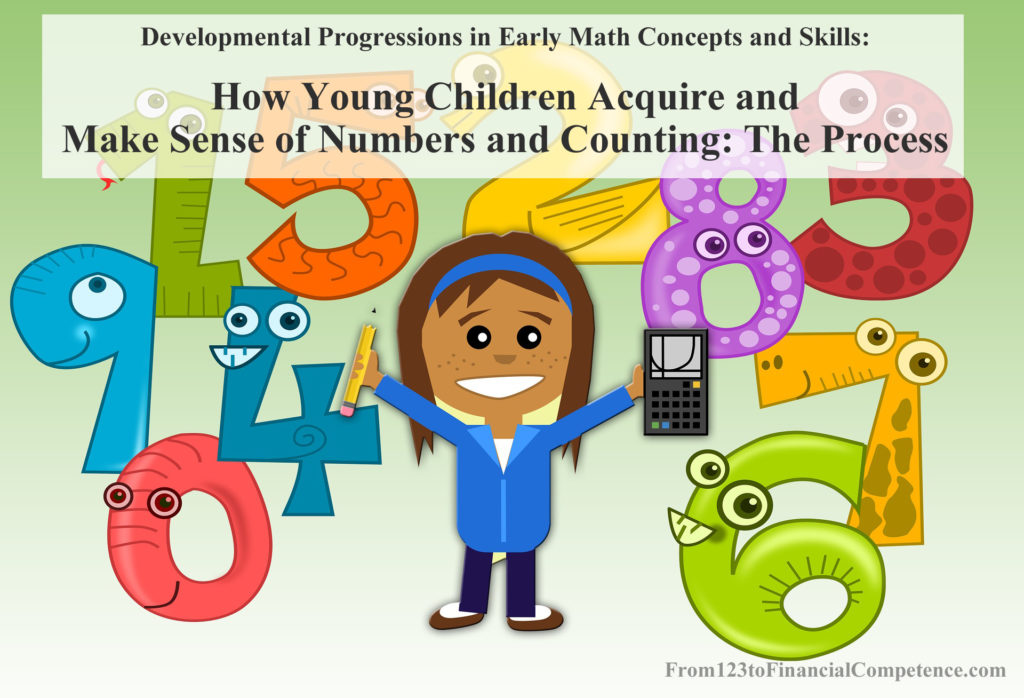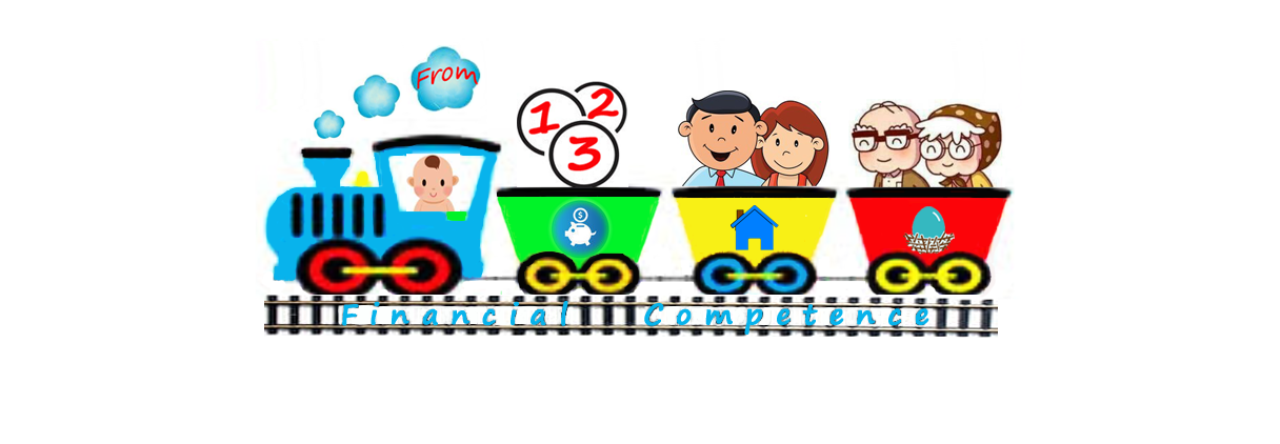In this article, we look at what the research says about the processes that young children typically go through as they begin to acquire and make sense of numbers and counting.

Milestones and Developmental Progressions
As parents, from the time we brought our newborns home from the hospital we are obsessed making sure our children reach certain milestones. When I went in to see my OBGYN for my postpartum visit, she gave me a little card that listed some common milestones from 2 months to 2 years. Despite fully being aware that those benchmarks are averages and that each child is unique and develops at his/her own pace, every 2 to 4 months I found myself comparing my daughter’s skills and behaviors to those listed on the developmental guide (the one that was given to me).
When we look at those developmental guides closely, we’d notice that each domain (such as language, physical, and social and emotional development) follows a natural progression in learning and development. Our little ones need to develop and master certain basic concepts and skills before moving on to learn more complex things. We’ve observed that our children first learned to crawl and then walk. At 26-months old, my daughter is currently learning to jump (and doing this with grace!). She’s a fast runner (she runs on full speed up the hill when we’re heading to the playground).
Developmental Progressions in Early Math Concepts and Skills
Similarly, it turns out that our children’s early math concepts and skills also follow natural developmental progressions. What must your child need to know before he/she understands the meanings of numbers and counting? When does your child develop the ability to recognize, identify and create geometric shapes and patterns? How does your child come to understand the relationship between shapes and objects? When and how do early math skills emerge? What component follows what?
Prior to having read the research on young children’s development of mathematical knowledge and concepts, my husband and I had some ideas of what to teach Ruby. We knew she needed to learn what the 10 numerals (0 through 9) look like, recognize the sounds of numbers from 0 to 10, learn to count from 0 to 10 and make sense of these concepts all together. However, both of us were clueless about the processes in which these early math learnings happen or how. Until we read the literature, we weren’t aware of the intricacies involved in early math learning.
Some of those readings overwhelmed us. Did you know that in order to know the counting system, your child must first learn to map math concepts into words, then he/she needs to learn the meanings of the number words, and then, your child must know that each number word’s position in the number word list relates directly to its meaning? (reference here)
Sounds crazy, right? The great news is that you don’t need to go through piles and piles of academic papers to study how young children acquire and learn early math concepts and skills (of course, unless you’re curious about the theories and methods behind the research, like I am :)). I’ve found some reliable sources on the Internet sharing this kind of information written in a language that most of us can understand! Despite having a Ph.D., I find academic writing difficult to read and digest.
Now, to lay the foundation teaching our children numbers and the counting system, let us take a look at what the research says about the processes that young children typically go through to learn and make sense of these basic math concepts.
Processes Children Go Through to Learn Numbers and Counting
Helping Your Child Become Aware of the Sounds of Numbers
First, your child needs to learn the sounds of the numbers ‘one, two, three…’. For most parents, this stage is pretty instinctive and an easy task. Each time we read books that include numbers to our children, we’re helping them become aware of the sounds of numbers. Every number song and rhyme we sing to and along with our children help reinforce that different numbers are associated with different sounds. Keep doing this with our children and they will soon come to recognize that numbers are part of language and that they mean something.
Making Associations While Counting
During this stage of development, provide different opportunities for our children to see and touch objects as we sound out each number. For instance, you might count the number of steps as you climb up the stairs with your child or the number of animal crackers as you place one at a time on your child’s serving plate. By creating meaningful experiences with numbers consistently, over time, our children will come to recognize that numbers are associated with quantities and have meanings in this world. This understanding forms the basic foundation for what’s next.
Matching One Object to One Other Object or Person
This stage is about helping our children move toward learning about matching one thing at a time with the number as they say it. This process is also known as ‘one-to-one correspondence’. For most parents, myself included, once our children can count (rote counting) from one to ten, we’d naturally think they can count. However, knowing the numbers in sequence does not mean our children really understand the meaning of counting. A child that understands one-to-one correspondence knows that when we say, “one,” we count one object and when we say, “two,” we count one more object. A child who has yet to master this stage is likely counting quickly through the numbers he/she has memorized and randomly pointing/touching the objects being counted instead of pointing and counting each object just once.
Recognizing Numbers as Symbols
Once our children understand that numbers have meanings, it’s time to train them to recognize numbers as symbols. At the core of this process, number identification is a form of shape recognition. This happens when our children learn the name of a number and its corresponding symbol and make the connection between the two (e.g., associating the word “five” with the symbol ‘5’).
Writing Numbers
This last stage involves teaching our children to write numbers correctly.
In future posts, I will continue to discuss and elaborate on the processes, concepts and skills mentioned here. The discussions will be a combination of research and hands-on activities. My husband and I are trying to make sense of all this while raising a toddler. This is part II of the series on Developmental Progressions in Early Math Concepts and Skills. Read part I here.


Comments are closed.